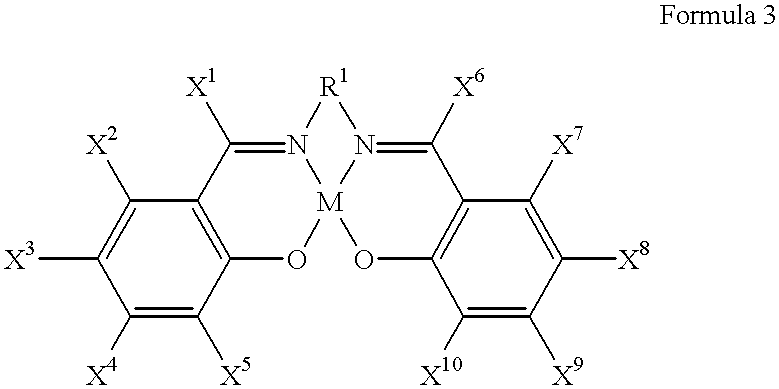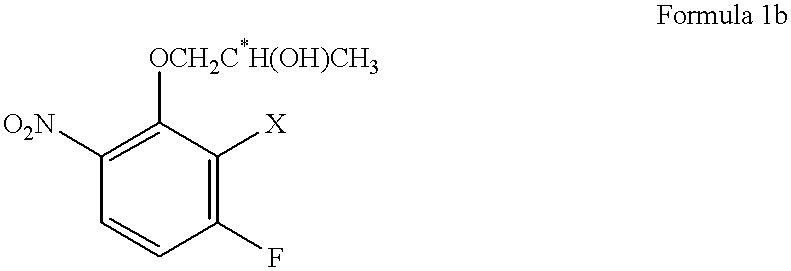Method for producing an optically active 1-substituted 2-propanol
a technology of substituted 2-propanol and optically active, which is applied in the preparation of ethers, organic compounds/hydrides/coordination complexes, physical/chemical process catalysts, etc., can solve the problems of poor volume efficiency and industrial application problems of conventional methods
- Summary
- Abstract
- Description
- Claims
- Application Information
AI Technical Summary
Problems solved by technology
Method used
Image
Examples
Embodiment Construction
Preparation of (2R)-1-(2,3-difluoro-6-nitrophenoxy)-2-propanol
Into a 200 ml glass reactor, 600 mg (2.1 mmol) of N,N'-bis(salicylidene)ethylenediaminocobalt.sup.II (a metal complex compound of the formula 3, wherein R.sup.1 is an ethylene group, and each of X.sup.1 to X.sup.10 is a hydrogen atom), 10.5 g (60 mmol) of 2,3-difluoro-6-nitrophenol, and 80 ml of methyl t-butyl ether were charged and stirred at room temperature for 2 hours in an air atmosphere. The solvent i.e. methyl t-butyl ether was distilled off under reduced pressure, and the reactor containing a dried brown solid was deaerated and filled with nitrogen. To this reactor, 8.4 g (65 mmol) of diisopropylethylamine, 5.8 g (100 mmol) of (R)-propylene oxide having an optical purity of 99.2% ee and 50 ml of toluene were added at room temperature and stirred at 40.degree. C. for 15 hours in a nitrogen atmosphere. At that time, the conversion of 2,3-difluoro-6-nitrophenol was 86%.
50 ml of water and 50 ml of methyl t-butyl ether...
PUM
| Property | Measurement | Unit |
|---|---|---|
| Optical activity | aaaaa | aaaaa |
Abstract
Description
Claims
Application Information
 Login to View More
Login to View More - R&D
- Intellectual Property
- Life Sciences
- Materials
- Tech Scout
- Unparalleled Data Quality
- Higher Quality Content
- 60% Fewer Hallucinations
Browse by: Latest US Patents, China's latest patents, Technical Efficacy Thesaurus, Application Domain, Technology Topic, Popular Technical Reports.
© 2025 PatSnap. All rights reserved.Legal|Privacy policy|Modern Slavery Act Transparency Statement|Sitemap|About US| Contact US: help@patsnap.com



